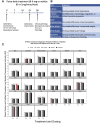Egg-Derived Anti-SARS-CoV-2 Immunoglobulin Y (IgY) With Broad Variant Activity as Intranasal Prophylaxis Against COVID-19
- PMID: 35720389
- PMCID: PMC9199392
- DOI: 10.3389/fimmu.2022.899617
Egg-Derived Anti-SARS-CoV-2 Immunoglobulin Y (IgY) With Broad Variant Activity as Intranasal Prophylaxis Against COVID-19
Abstract
COVID-19 emergency use authorizations and approvals for vaccines were achieved in record time. However, there remains a need to develop additional safe, effective, easy-to-produce, and inexpensive prevention to reduce the risk of acquiring SARS-CoV-2 infection. This need is due to difficulties in vaccine manufacturing and distribution, vaccine hesitancy, and, critically, the increased prevalence of SARS-CoV-2 variants with greater contagiousness or reduced sensitivity to immunity. Antibodies from eggs of hens (immunoglobulin Y; IgY) that were administered the receptor-binding domain (RBD) of the SARS-CoV-2 spike protein were developed for use as nasal drops to capture the virus on the nasal mucosa. Although initially raised against the 2019 novel coronavirus index strain (2019-nCoV), these anti-SARS-CoV-2 RBD IgY surprisingly had indistinguishable enzyme-linked immunosorbent assay binding against variants of concern that have emerged, including Alpha (B.1.1.7), Beta (B.1.351), Delta (B.1.617.2), and Omicron (B.1.1.529). This is different from sera of immunized or convalescent patients. Culture neutralization titers against available Alpha, Beta, and Delta were also indistinguishable from the index SARS-CoV-2 strain. Efforts to develop these IgY for clinical use demonstrated that the intranasal anti-SARS-CoV-2 RBD IgY preparation showed no binding (cross-reactivity) to a variety of human tissues and had an excellent safety profile in rats following 28-day intranasal delivery of the formulated IgY. A double-blind, randomized, placebo-controlled phase 1 study evaluating single-ascending and multiple doses of anti-SARS-CoV-2 RBD IgY administered intranasally for 14 days in 48 healthy adults also demonstrated an excellent safety and tolerability profile, and no evidence of systemic absorption. As these antiviral IgY have broad selectivity against many variants of concern, are fast to produce, and are a low-cost product, their use as prophylaxis to reduce SARS-CoV-2 viral transmission warrants further evaluation.
Clinical trial registration: https://www.clinicaltrials.gov/ct2/show/NCT04567810, identifier NCT04567810.
Keywords: COVID-19; IgY; SARS-CoV-2; chicken immunoglobulin; clinical trial body; immunoglobulin Y; infectious diseases.
Copyright © 2022 Frumkin, Lucas, Scribner, Ortega-Heinly, Rogers, Yin, Hallam, Yam, Bedard, Begley, Cohen, Badger, Abbasi, Dye, McMillan, Wallach, Bricker, Joshi, Boon, Pokhrel, Kraemer, Lee, Kargotich, Agochiya, John and Mochly-Rosen.
Conflict of interest statement
GY, TH, AY, and KB are affiliated with Sutro Biopharma, Inc; NO-H with Charles River Laboratories, Inc; JR, with Linear Clinical Research. Ltd; and BM with Bravado Pharmaceuticals, Inc. DM-R is named on a patent filed for composition and methods for passive immunization against viral infections such as SARS-CoV-2. The remaining authors declare that the research was conducted in the absence of any commercial or financial relationships that could be construed as a potential conflict of interest.
Figures






References
-
- World Health Organization . WHO Coronavirus (COVID-19) Dashboard (2022). Available at: https://covid19.who.int (Accessed May 1, 2022).
-
- University of Oxford . Vaccination by Location (2022). Available at: https://ourworldindata.org/covid-vaccinations?country=OWID_WRL (Accessed May 1, 2022).
Publication types
MeSH terms
Substances
Supplementary concepts
Associated data
LinkOut - more resources
Full Text Sources
Other Literature Sources
Medical
Research Materials
Miscellaneous

